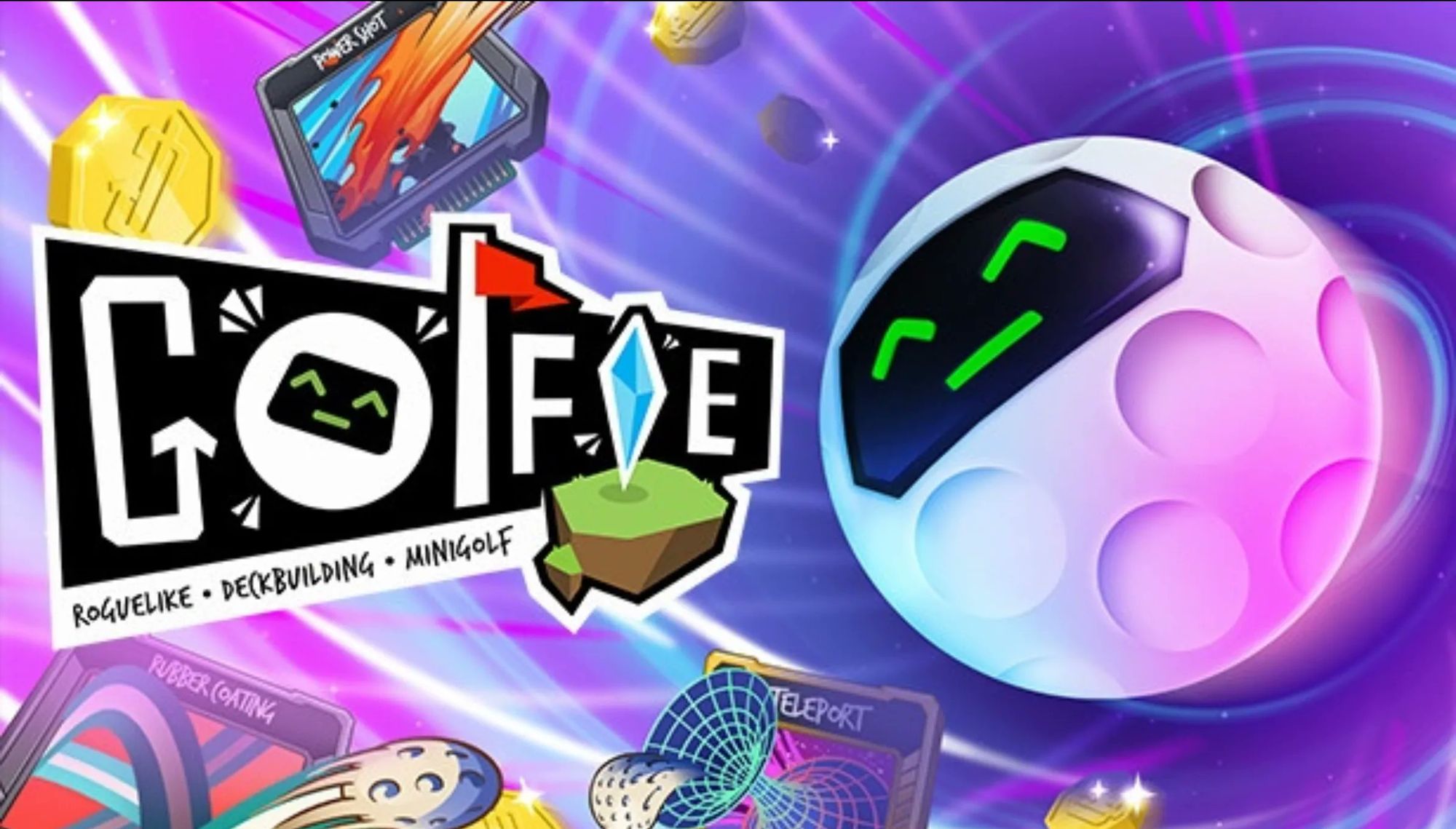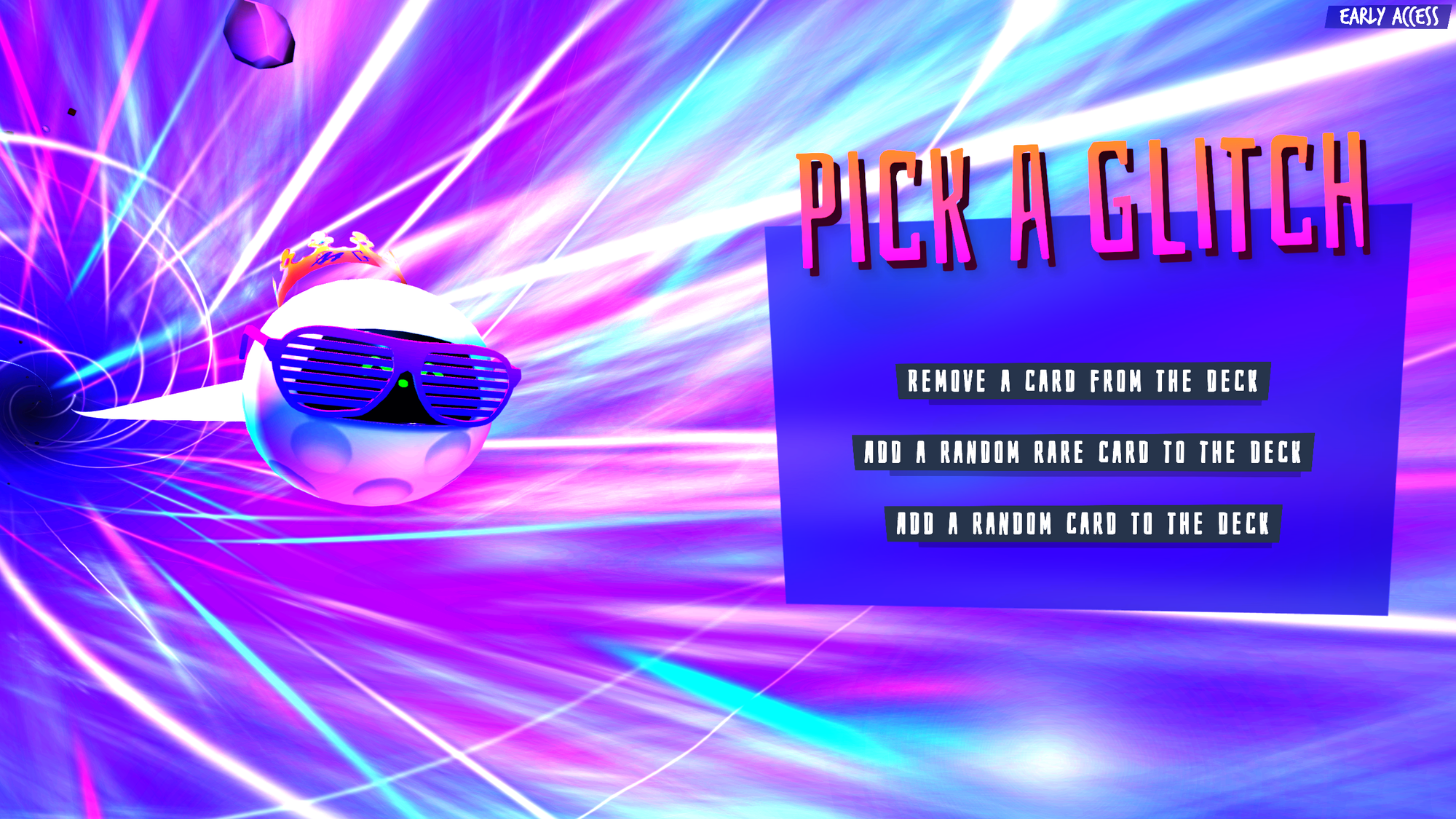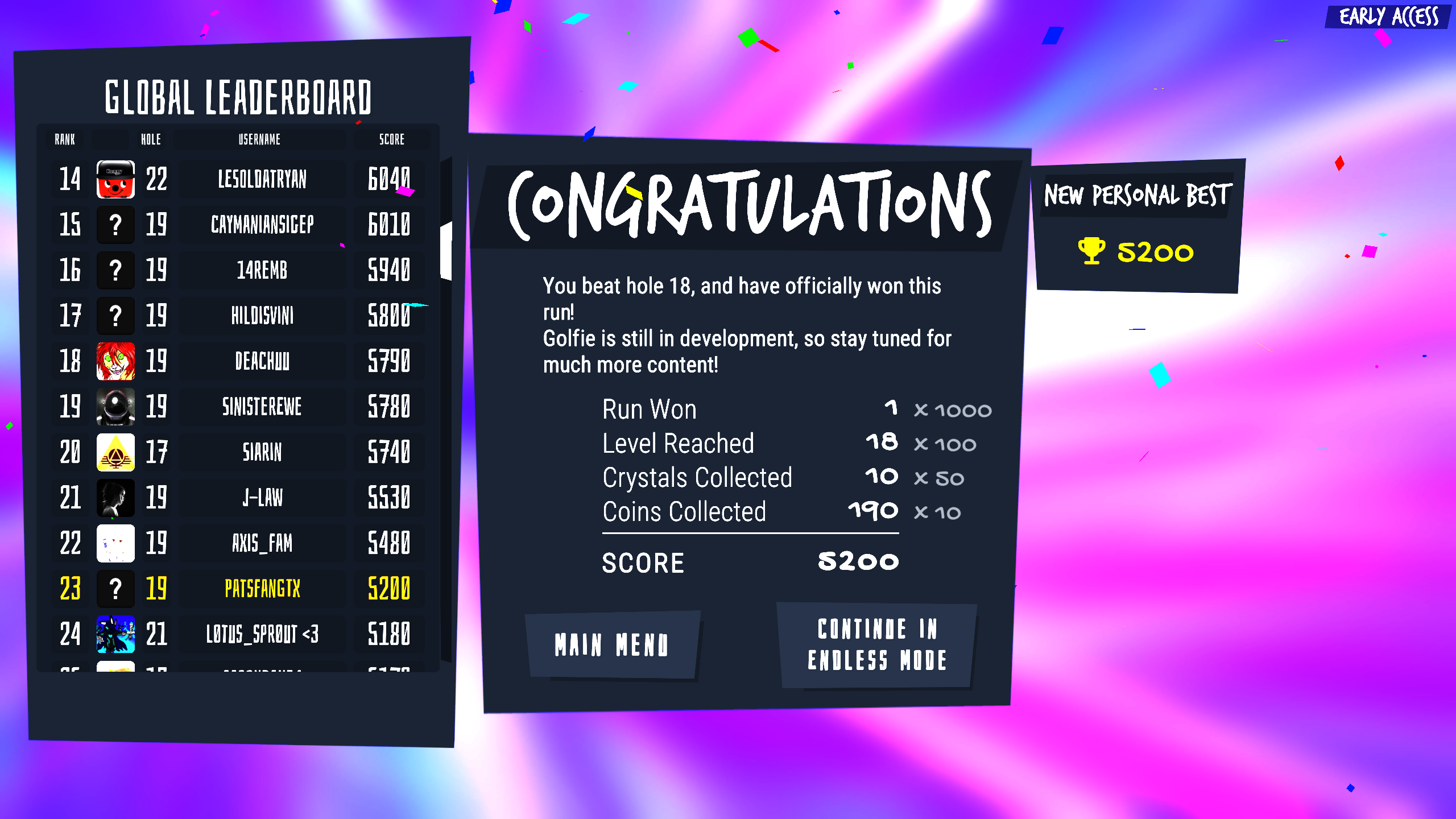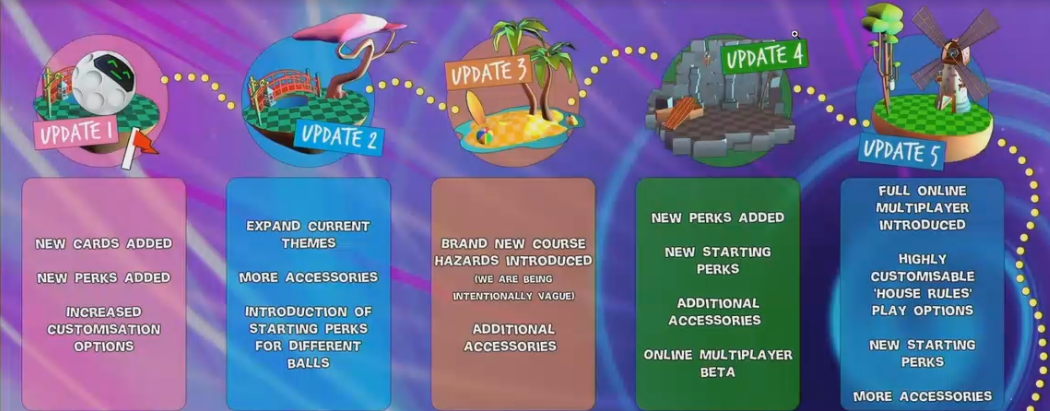Golfie: They See Me Rollin'
Golfie is an exciting roguelike deck builder mini-golf game, and while there's room for improvement, the game shows incredible promise

For as long as mini-golf has lived rent-free in my mind, it has also been equally just out of reach. I spent summers at the local pool as a youth with a quaint mini-golf course just beyond the perimeter, seemingly never open when I would want to go. Any time I see a mini-golf course when traveling out of town with my family, they are quick to shoot down the suggestion, saying “We can play mini-golf anywhere, so we’re only doing the special tourist attractions” although we would never play mini-golf even when we’re home.
That changed with Thrillville. Featured as a mini-game, I could not only play mini-golf to my heart’s content, but I could also design my mini-golf courses. As a youth with no ability to restrain my enthusiasm for absolutely anything, you know I made those courses as absurd as possible. Best of all, I didn’t need anybody else to enjoy this neglected pastime!
In adulthood, I faced the same problems. Mini-golf isn’t terribly interesting to too many people I know; more people would rather go to TopGolf, a fascination which eludes me (they don’t even have windmills, that’s a deal-breaker). So as before, I turn to digital means to satiate my appetite for mini-golf. Enter: Golfie.
Golfie is a roguelike deck builder mini-golf game developed by Triheart Studio, currently in Early Access on Steam. While there is room for improvement, the game shows promise, with the development team showing consistent progress with necessary updates.

Swing Easy with Golfie
Like most deck builders, you start each run with a predetermined set of cards and your choice of one modifier. The starting deck includes power shot, lob shot, and curve shot. You can collect additional shot types and alterations by purchasing them at shops or by hitting blue crystal shards that are randomly placed on each course. You can technically take a shot using no cards, but the distance your shot travels is negligible if you don’t have the perk that upgrades your base shot. This should only be used if you’re really close to the hole or backed into a corner between environmental obstacles, as I too often find myself.
Some cards aren’t shots, exactly, but can perform other actions such as drawing cards, placing objects in the environment, and attaching manually activated abilities to use while your ball is in motion. The most useful cards outside of the starting deck, for me at least, have been the jetpack, the magnetic field, and the teleporter.
Besides cards, you can also pick up perks from red crystals and shops. The most useful ones that I’ve found include reducing shop prices, charging your battery for every 20 coins you pick up, increasing the number of shots you can take on each course, and increasing the number of cards you draw each turn. You can get the same perk multiple times, so stacking the best ones is definitely a good move.

Next is the course itself. While the exact layout doesn’t appear strictly predetermined, you’ll find several environmental structures or elements appear identically across runs (likely even sooner). The primary distinguishing factor in the design of the courses is the different environments.
There are currently four stages: a zen garden with relaxing ambiance and water-rippled terrain, a beach that requires island hopping, a windmill area beset with moving obstacles, and a dungeon that features hazards such as axes and lava. Each of these environments becomes progressively more challenging and lengthy.
A complete run comprises 18 holes (I’ve only sneaked in one win so far). On the map, you get to choose which branching path to take. As you move along each run, you have a health bar that is represented as a battery. You have several charges to start, which deplete with each shot that exceeds the par count or leaves the field of play. You can recharge your battery at shops or with certain perks.

Potential Areas of Improvement
I’ll admit, when I first started playing Golfie, I found it repetitive. There wasn’t much differentiation in the stages nor many cards or perks that I found to be helpful. I want to note, however, that developers, Triheart Studio, have made several updates to the game since my initial playthroughs. The added card and perk options have significantly improved upon some pain points of previous versions, and I’m interested to see what wacky stuff they include in the future.
That said, there is still plenty of room for improvement to make the game even more enjoyable.
I think the aspect with the greatest room for improvement is the course design. Once you’ve played enough run-throughs, you’ll see the same designs within each environment almost beat-for-beat. In order to keep the game feeling fresh, some additional designs will go a long way.
This addition would improve the branching mechanic. Currently, there’s not much to consider when choosing which path to choose; you just pick the paths with the most shops along them. Besides new designs, perhaps they could add new environments and create “challenge” courses, which offer greater coins/perks for completing especially dicey courses. The added risk-reward mechanism would add a healthy dose of tension and make better use of its existing branching system.
Other smaller issues include several needed quality-of-life improvements:
- Allow a back button, not to undo your shot but to unequip the cards you’ve selected: Currently, once you select a card, you can’t remove them. There are several times when I want to preview the trajectory of a shot before committing to it and find that I want to remove a lob or power shot from it. Or maybe I accidentally mis-clicked. If so, you’re just out of luck and it hurts one of the more fun aspects of the game. If you want players to take risky shots, give them every opportunity to preview what type of shot they take and adjust accordingly.
- The slopes on certain terrains are difficult to discern: Sometimes my ball will start rolling, to my surprise. I think this has to do with the color fill of the ground in certain places. More clear, visual indicators of any kind would be helpful.
- It’s difficult to see where the ball is going to end up, at times: The shot preview, indicated by an orange arrow, doesn’t fully extend to the full shot's trajectory and messes with players’ depth perception. It’s like when you ask for directions and someone just points and states “That way,” without indicating whether they mean it’s at the tip of their finger (unlikely) or at the event horizon along the vector formed by their arm (just as unlikely). It’s especially bad on the beach levels, where the sand is the same color as your arrow.
- The blue and red crystals are shaped strangely, impacting shot preview: If you preview your shot while the crystal is in its trajectory, the trajectory moves all over the place because of the contours of the crystals. I think it would help if these were more “well-behaved” and less reactive.

Golfie is definitely challenging, especially once you get past the first 10 stages. Taking risky shots that succeed is deeply satisfying. I think the game just needs to make some balancing adjustments and QOL fixes so that the more redeeming qualities stand front and center.
Just as I enjoyed the over-the-top approach that I took in Thrillville, I think this game stands to go over well if it fully embraces the cartoonish element that, to me, best suits mini-golf. I have a few suggestions for stage environments: wild west, outer space, dinosaurs, deep sea, the whole kitchen sink (although, a kitchen-themed level? Why not? Rayman did it). I also would definitely enjoy a custom-stage design tool, so I can unleash my worst mini-golf design impulses.
There’s still room to grow but, provided the development team continues to make improvements and add content as they have been since its release, it may very well end up as my go-to fix for mini-golf.
